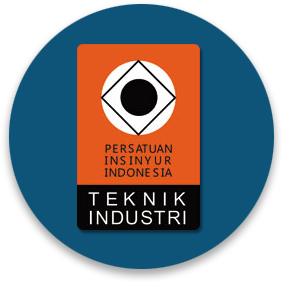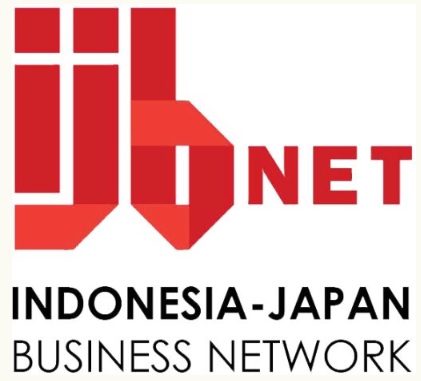Mitigasi Risiko Kecelakaan Kerja Pada Gudang dengan Pendekatan Hazard Identification Risk Assessment and Determining Control (HIRADC) di PT. Young Tree Industries
Abstract
Penelitian ini bertujuan untuk menganalisis mitigasi risiko kecelakaan kerja pada gudang dengan menggunakan pendekatan Hazard Identification Risk Assessment and Determining Control. Penelitian yang menggunakan pendekatan kualitatif ini dilaksanakan di PT. Young Tree Industries. Informan penelitian adalah 3 (tiga) orang yang ditentukan Purposive sampling, yakni 1 orang kepala bagian, 1 orang staff (pengawas), dan 1 orang operator. Data dikumpulkan melalui wawancara, observasi, dan dokumentasi, serta dianalisis pada beberapa tahapan yang dimulai dari tahap reduksi data, display data, penarikan kesimpulan dan verifikasi. Hasil penelitian menunjukan bahwa bahaya-bahaya kerja di gudang PT. Young Tree Industries adalah stacking sepatu yang tidak teratur dan penggunaan forklift tanpa pelatihan yang memadai yang memiliki risiko yang tinggi, dan bahaya kondisi lantai yang licin akibat tumpahan minyak atau air dan keterbatasan pencahayaan di beberapa area gudang yang memiliki risiko rendah. Untuk mengatasi masalah-masalah tersebut, maka beberapa upaya-upaya pengendalian risiko yang perlu dilaksanakan adalah menerapkan sistem penyimpanan sepatu yang teratur dan aman, serta melibatkan pekerja dalam proses pengorganisasian; menjaga kebersihan dan kekeringan lantai gudang dengan melakukan pembersihan secara rutin dan mengatasi tumpahan minyak atay air segera setelah terjadi; memberikan pelatihan yang memadai kepada pengemudi forklift dan memastikan penggunaan forklift sesuai dengan prosedur yang ditetapkan; dan meningkatkan pencahayaan di area gudang yang memiliki keterbatasan pencahayaan dengan menambahkan lampu tambahan atau memperbaiki sistem pencahayaan yang ada.
Keywords
Full Text:
PDFReferences
Aju Kumar, V. N., Gandhi, M. S., & Gandhi, O. P. (2015). Identification and assessment of factors influencing human reliability in maintenance using fuzzy cognitive maps. Quality and Reliability Engineering International, 31(2), 169–181.
Ameiliawati, R. (2022). Penerapan Keselamatan dan Kesehatan Kerja dengan Metode HIRADC (Hazard Identification, Risk Assessment and Determining Control) di Area Plant-Warehouse. Departemen Kesehatan dan Keselamatan Kerja, Fakultas Kesehatan Masyarakat, Universitas Airlangga.
Attwood, D., Khan, F., & Veitch, B. (2006). Can we predict occupational accident frequency? Process Safety and Environmental Protection, 84(3 B), 208–221. https://doi.org/10.1205/psep.05113
Awinia, C. S. (2023). Infrastructure Network Support and Leapfrogging Africa to Industry 4.0: The Case of Tanzania. Procedia Computer Science, 217(2022), 1–10. https://doi.org/10.1016/j.procs.2022.12.196
Baldissone, G., Comberti, L., Bosca, S., & Murè, S. (2019). The analysis and management of unsafe acts and unsafe conditions. Data collection and analysis. Safety Science, 119, 240–251.
Berkhout, P. H. G., & Damen, M. (2014). Estimating individual occupational risk using registration data. Safety and Reliability: Methodology and Applications, 1335–1343. https://doi.org/10.1201/b17399-187
Boiral, O. (2012). ISO 9000 and Organizational Effectiveness: A Systematic Review. Quality Management Journal, 19(3), 16–37. https://doi.org/10.1080/10686967.2012.11918071
Chenani, K. T., Nodoushan, R. J., Jahangiri, M., Madadizadeh, F., & Fallah, H. (2022). Quantification of the impact of factors affecting the technical performance of operating room personnel: Expert judgment approach. Journal of Healthcare Risk Management : The Journal of the American Society for Healthcare Risk Management, 41(4), 9–16. https://doi.org/10.1002/jhrm.21497
Dedobbeleer, N., & Béland, F. (1991). A safety climate measure for construction sites. Journal of Safety Research, 22(2), 97–103. https://doi.org/10.1016/0022-4375(91)90017-P
Elmaraghy, W. H., Nada, O. A., & ElMaraghy, H. A. (2008). Quality prediction for reconfigurable manufacturing systems via human error modelling. Nternational Journal of Computer Integrated Manufacturing, 21(5), 584–598.
Fragiadakis, N. G., Tsoukalas, V. D., & Papazoglou, V. J. (2014). An adaptive neuro-fuzzy inference system (anfis) model for assessing occupational risk in the shipbuilding industry. Safety Science, 63, 226–235.
Gheisari, M., & Esmaeili, B. (2019). Applications and requirements of unmanned aerial systems (UASs) for construction safety. Safety Science, 118, 230–240.
Grassi, A., Gamberini, R., Mora, C., & Rimini, B. (2009). A fuzzy multi-attribute model for risk evaluation in workplaces. Safety Science, 47(5), 707–716.
ILO. (2021). Keselamatan dan Kesehatan Kerja (Sarana untuk Produktivitas).
Janicak, C. A. (1998). Fall-related deaths in the construction industry. Journal of Safety Research, 29(1), 35–42.
Jilcha, K., & Kitaw, D. (2016). A literature review on global occupational safety and health practice & accidents severity. International Journal for Quality Research, 10(2), 279–310. https://doi.org/10.18421/IJQR10.02-04
Khosravi, Y., Asilian-Mahabadi, H., Hajizadeh, E., Hassanzadeh-Rangi, N., Bastani, H., & Behzadan, A. H. (2014). Factors influencing unsafe behaviors and accidents on construction sites: A review. International Journal of Occupational Safety and Ergonomics, 20(1), 111–125. https://doi.org/10.1080/10803548.2014.11077023
Kim, S., Lee, J., & Kang, C. (2021). Analysis of industrial accidents causing through jamming or crushing accidental deaths in the manufacturing industry in South Korea: Focus on non-routine work on machinery. Safety Science, 133.
Kines, P. (2003). Case studies of occupational falls from heights: Cognition and behavior in context. Journal of Safety Research, 34(3), 263–271.
Klimecka-Tatar, D., Ulewicz, R., & Ingaldi, M. (2023). Minimizing occupational risk by automation of the special processes - based on occupational risk assessment. Procedia Computer Science, 217, 1145–1152.
Konstandinidou, M., Nivolianitou, Z., Kiranoudis, C., & Markatos, N. (2006). A fuzzy modeling application of CREAM methodology for human reliability analysis. Reliability Engineering and System Safety, 91(6), 706–716. https://doi.org/10.1016/j.ress.2005.06.002
Koulinas, G. K., Marhavilas, P. K., Demesouka, O. E., Vavatsikos, A. P., & Koulouriotis, D. E. (2019). Risk analysis and assessment in the worksites using the fuzzy-analytical hierarchy process and a quantitative technique–A case study for the Greek construction sector. Safety Science, 112, 96–104.
La Fata, C. M., Adelfio, L., Micale, R., & La Scalia, G. (2023). Human error contribution to accidents in the manufacturing sector: A structured approach to evaluate the interdependence among performance shaping factors. Safety Science, 161.
Lee, D. H., Yang, J. K., Lee, C. H., & Kim, K. J. (2019). A data-driven approach to selection of critical process steps in the semiconductor manufacturing process considering missing and imbalanced data. Journal of Manufacturing Systems, 52(July), 146–156. https://doi.org/10.1016/j.jmsy.2019.07.001
Liao, C.-W., & Perng, Y.-H. (2008). Data mining for occupational injuries in the Taiwan construction industry. Safety Science, 46(7), 1091–1102.
Lyu, Q., Fu, G., Wang, Y., Li, J., Han, M., Peng, F., & Yang, C. (2022). How accident causation theory can facilitate smart safety management: An application of the 24Model. Process Safety and Environmental Protection, 162, 878–890.
Mahdi, & M.I. (2022). Kasus Kecelakaan Kerja di Indonesia Alami Tren Meningkat. Dataindonesia. id.
Marcoulaki, E. C., Papazoglou, I. A., & Konstandinidou, M. (2012). Prediction of occupational accident statistics and work time loss distributions using Bayesian analysis. Journal of Loss Prevention in the Process Industries, 25(3), 467–477. https://doi.org/10.1016/j.jlp.2011.11.014
Min, S. N., Kim, S., & Kang, C. (2023). Efficient safety management plan for industrial accident prevention of hazardous machinery: Focus on safety certification system and regulations in South Korea. Safety Science, 165.
Moore, L. L., Wurzelbacher, S. J., Chen, I. C., Lampl, M. P., & Naber, S. J. (2022). Reliability and validity of an employer-completed safety hazard and management assessment questionnaire. Journal of Safety Research, 81, 283–296.
Murè, S., & Demichela, M. (2009). Fuzzy Application Procedure (FAP) for the risk assessment of occupational accidents. Journal of Loss Prevention in the Process Industries, 22(5), 593–599.
Mutlu, N. G., & Altuntas, S. (2019). Assessment of occupational risks In Turkish manufacturing systems with data-driven models. Ournal of Manufacturing Systems, 53, 169–182.
Nag, P. K., & Patel, V. G. (1998). Work accidents among shiftworkers in industry. Nternational Journal of Industrial Ergonomics, 21(3-4), 275–281.
Nenonen, N. (2013). Analysing factors related to slipping, stumbling, and falling accidents at work: Application of data mining methods to Finnish occupational accidents and diseases statistics database. Applied Ergonomics, 44(2), 215–224.
Pačaiová, H., Andrejiová, M., Balažiková, M., Tomašková, M., Gazda, T., Chomová, K., Hijj, J., & Salaj, L. (2021). Methodology for complex efficiency evaluation of machinery safety measures in a production organization. Applied Sciences (Switzerland), 11(1), 1–16. https://doi.org/10.3390/app11010453
Papadakis, G. A., & Chalkidou, A. A. (2008). The exposure–damage approach in the quantification of occupational risk in workplaces involving dangerous substances. Safety Science, 46(6), 972–991.
Papazoglou, I. A., Aneziris, O., Bellamy, L., Ale, B. J. M., & Oh, J. I. (2015). Uncertainty assessment in the quantification of risk rates of occupational accidents. Risk Analysis, 35(8), 1536–1561.
Patelli, E., Feng, G., Coolen, F. P. A., & Coolen-Maturi, T. (2017). Simulation methods for system reliability using the survival signature. Reliability Engineering and System Safety, 167, 327–337. https://doi.org/10.1016/j.ress.2017.06.018
Perdana, F. (2022). Analisis Risiko Kecelakaan Kerja Pada Stasiun Pengisian Lpg Dengan Menggunakan Metode Fuzzy. Industry Xplore, 7(1), 132–135. https://doi.org/10.36805/teknikindustri.v7i1.2215
Petrillo, A., Falcone, D., De Felice, F., & Zomparelli, F. (2017). Development of a risk analysis model to evaluate human error in industrial plants and in critical infrastructures. International Journal of Disaster Risk Reduction, 23, 15–24.
Pinto, A. (2012). Abel Fernando do Nascimento Pinto Development of a Fuzzy Qualitative Risk Assessment Model applied to construction industry. February, 1–209.
Sarkar, S., Vinay, S., & Maiti, J. (2016). Text mining based safety risk assessment and prediction of occupational accidents in a steel plant. 2016 International Conference on Computational Techniques in Information and Communication Technologies, ICCTICT 2016 - Proceedings, October 2017, 439–444. https://doi.org/10.1109/ICCTICT.2016.7514621
Sorock, G. S., Lombardi, D. A., Courtney, T. K., Cotnam, J. P., & Mittleman, M. A. (2001). Epidemiology of occupational acute traumatic hand injuries: a literature review. Safety Science, 38(3), 241–256.
Turkkan, A., & Pala, K. (2016). Trends in occupational injuries and fatality in Turkey. International Journal of Occupational Safety and Ergonomics, 22(4), 457–462.
Wang, Y., Ding, Y., Chen, G., & Jin, S. (2019). Human reliability analysis and optimization of manufacturing systems through Bayesian networks and human factors experiments: A case study in a flexible intermediate bulk container manufacturing plant. International Journal of Industrial Ergonomics, 72, 241–251.
Zhou, X., Shi, Y., Deng, X., & Deng, Y. (2017). D-DEMATEL: A new method to identify critical success factors in emergency management. Safety Science, 91, 93–104.
DOI: http://dx.doi.org/10.22441/MBCIE.2023.006
Refbacks
- There are currently no refbacks.
Copyright (c) 2023 Proceeding Mercu Buana Conference on Industrial Engineering

This work is licensed under a Creative Commons Attribution-ShareAlike 4.0 International License.
Journal ISSN:
| e-ISSN | |
| 2988-4284 |
Tim Editorial Office
Proceeding Mercu Buana Conference on Industrial Engineering
Program Studi Magister Teknik Industri Universitas Mercu Buana
Jl. Raya Meruya Selatan No. 1 Kembangan Jakarta Barat
Email: [[email protected]]
Website: https://publikasi.mercubuana.ac.id/index.php/mbcie/
The Journal is Indexed and Journal List Title by:
in Collaboration with:








